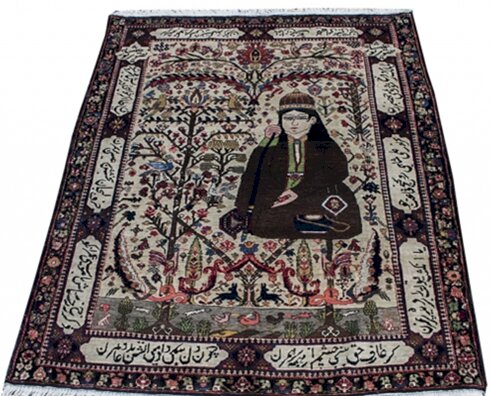Iranian researcher probes carpet patterns emerged during Qajar era

TEHRAN – An Iranian researcher has investigated various rugs and carpets woven during the Qajar era (1789–1925) to discover novel patterns that emerged in the epoch.
The study has been conducted by Leyla Nafisinia who is one of the researchers of the Research Institute of Cultural Heritage & Tourism, CHTN reported.
The emergence and expansion of pictorial and adaptive patterns were the most important carpet designs during the period, according to the institute.
Moreover, the researcher has delved into various written sources and existing patterns and conducted interviews with experts as well.
According to the research, motifs used in such carpets, except pictorial designs, are mostly plant-based yet they bear animal motifs, especially imaginary animals as well.
Furthermore, a tendency towards realism and naturalism in drawing motifs is another feature of the Qajar-era carpets, the report said.
For millennia, Iran’s eminent carpets, which are adored for their intricate designs, lavish colors, and matchless craftsmanship, have been produced by hand along the nomad trail across the foothills and high plains of the ancient land.
Weavers, almost all of them women, spend several months in front of a loom, stringing and knotting thousands of threads. Some practice established patterns, some make their own.
It is a scene that seems ageless, a procedure that can take as long as a year, these efforts have long put Iran’s carpets among the most complex and labor-intensive handicrafts in the world. When the weaving is finally done, the carpet is cut, washed, and put out in the sun to dry.
Persian carpets are sought after internationally with the medallion pattern being arguably the most characteristic feature of them all. However, there is tremendous variation in the shapes and sizes of the medallions as well as the way they are used in various rugs. It’s not wrong to say that no two rugs will have the same medallion layout.
Based on available data, over 5,397,000 tons of Iranian carpets, worth $424.451 million, were exported to over 70 countries with the U.S. standing on top of the importers' list, during the Iranian calendar year 1397 (ended March 20, 2019). Germany, the UK, Italy, France, Spain, Switzerland, Austria, Russia, Portugal, Denmark, Sweden, and Norway as well as Hungary, Romania, Poland, and Ireland were major importers of Iranian carpet.
AFM
Leave a Comment